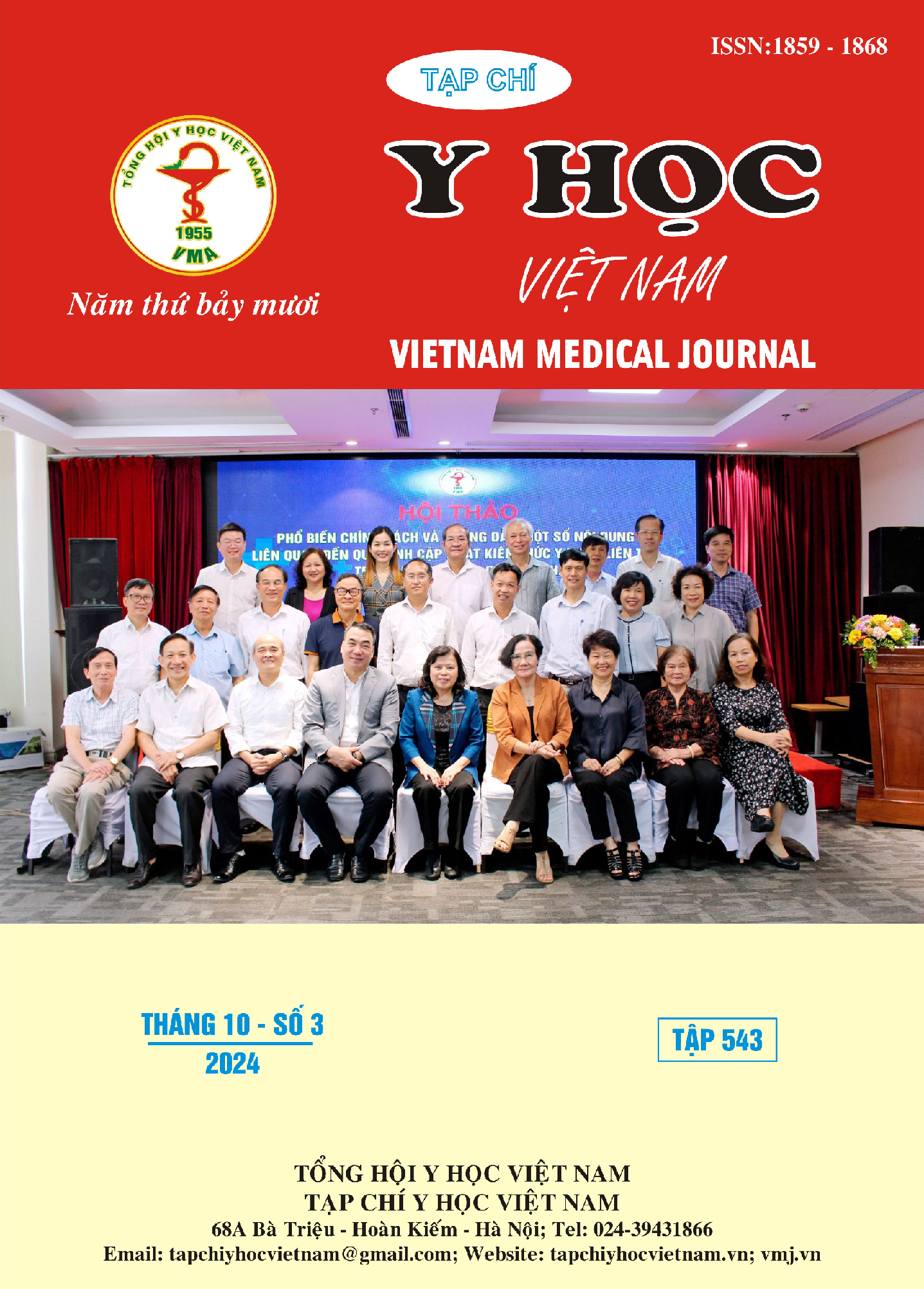ASESSMENT OF THE RESULTS OF FINE MOTOR INTERVENTION AND CONSTRAINT – INDUCED MOVEMENT THERAPY (P-CIMT) FOR CHILDREN WITH SPASTIC CEREBRAL PALSY AT HANOI REHABILITATION HOSPITAL
Main Article Content
Abstract
Objective: Evaluation of the results of intervention on fine motor skills and constraint – induced movement therapy (P-CIMT) for children with spastic cerebral palsy at Hanoi Rehabilitation Hospital. Subjects and methods: Prospective, clinical trial, comparison before and after treatment, no control group on 30 children with spastic cerebral palsy who were treated with fine motor skills and constraint – induced movement therapy (P-CIMT). Results: The box and block test (BBT) increased by an average of 1.03 blocks after 4 weeks and by an average of 3.8 blocks after 8 weeks. Pediatric Motor Activity Log (PMAL) “How often scale” and the “How well scale” after 4 weeks both increased by 0.14 points, after 8 weeks increased by 0.44 and 0.51 points, respectively. The goal achievement (GAS) results after 4 weeks at level (0,1,2) were 13.3% and after 8 weeks was 56.6%. The difference in the above results was statistically significant p<0.01. Conclusion: The two methods of intervention for fine motor skills and constraint – induced movement therapy (P-CIMT) helped children with spastic cerebral palsy to improve hand function well.
Article Details
Keywords
Spastic cerebral palsy, fine motor skills, constraint – induced movement therapy, P-CIMT
References
2. Odding E, Roebroeck ME, Stam HJ. The epidemiology of cerebral palsy: Incidence, impairments and risk factors. Disabil Rehabil. 2006; 28(4):183-191.
3. A report: the definition and classification of cerebral palsy April 2006. Dev Med Child Neurol. 2007;49:8-14.
4. Hoàng Thị Liên. Đánh giá hiệu quả chương trình P – CIMT cho trẻ bại não thể co cứng tại bệnh viện Phục hồi chức năng Hà Nội. Luận văn Thạc sỹ Y học, Trường Đại học Y Hà Nội. 2020.
5. Đỗ Thị Phương Thảo. Đánh giá kết quả can thiệp vận động cưỡng bức bên liệt và trị liệu phối hợp hai tay trên trẻ bại não thể co cứng. Tạp chí Y học Việt Nam. 2023. Số 1/2023
6. Sung, I.-Y.; Ryu, J.-S.; Pyun, S.-B.; Yoo, S.-D.; Song, W.-H.; Park, M.-J. Efficacy of Forced-Use Therapy in Hemiplegic Cerebral Palsy. Arch Phys Med Rehabil 2005, 86 (11), 2195 -2198.
7. Taub, E.; Ramey, S. L.; Deluca, S,; Echols, K. Efficacy of Constraint-Induced Movement Therapy for Children with Cerebral Palsy with Asymmetric Motor Impairment. Pediatrics 2004, 113 (2), 305-312.
8. Sorsdahl, A. B., Moe-Nilssen, R., Kaale, H. K., Rieber, J., & Strand, L. I. (2010), Change
in basic motor abilities, quality of movement and everyday activities following intensive, goaldirected, activity-focused physiotherapy in a group setting for children with cerebral palsy. BMC Pediatrics, 10, 26


